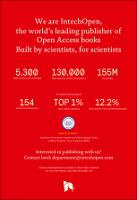Chapter The Intertwined Chloroplast and Nuclear Genome Coevolution in Plants
Author(s)
Rousseau-Gueutin, Mathieu
Martin, Guillaume
Ferreira de Carvalho, Julie
Keller, Jean
Aïnouche, Abdelkader
Language
EnglishAbstract
Photosynthetic eukaryotic cells arose more than a billion years ago through the engulfment of a cyanobacterium that was then converted into a chloroplast, enabling plants to perform photosynthesis. Since this event, chloroplast DNA has been massively transferred to the nucleus, sometimes leading to the creation of novel genes, exons, and regulatory elements. In addition to these evolutionary novelties, most cyanobacterial genes have been relocated into the nucleus, highly reducing the size, gene content, and autonomy of the chloroplast genome. In this chapter, we will first present our current knowledge on the origin and evolution of the plant plastome in the different Archaeplastida lineages (Glaucophyta, Rhodophyta, and Viridiplantae), focusing on its gene content, genome size, and structural evolution. Second, we will present the factors influencing the rate of DNA transfer from the chloroplast to the nucleus, the evolutionary fates of the nuclear integrants of plastid DNA (nupts) in their new eukaryotic environment, and the drivers of chloroplast gene functional relocation to the nucleus. Finally, we will discuss how cytonuclear interactions led to the intertwined coevolution of nuclear and chloroplast genomes and the impact of hybridization and allopolyploidy on cytonuclear interactions.
Keywords
endosymbiosis, plastome evolution, functional gene transfer, nuclear integrant of plastid DNA (nupt), nucleo-cytoplasmic interactionsDOI
10.5772/intechopen.75673Publisher
InTechOpenPublisher website
https://www.intechopen.com/Publication date and place
2018Classification
Agricultural science


 Download
Download